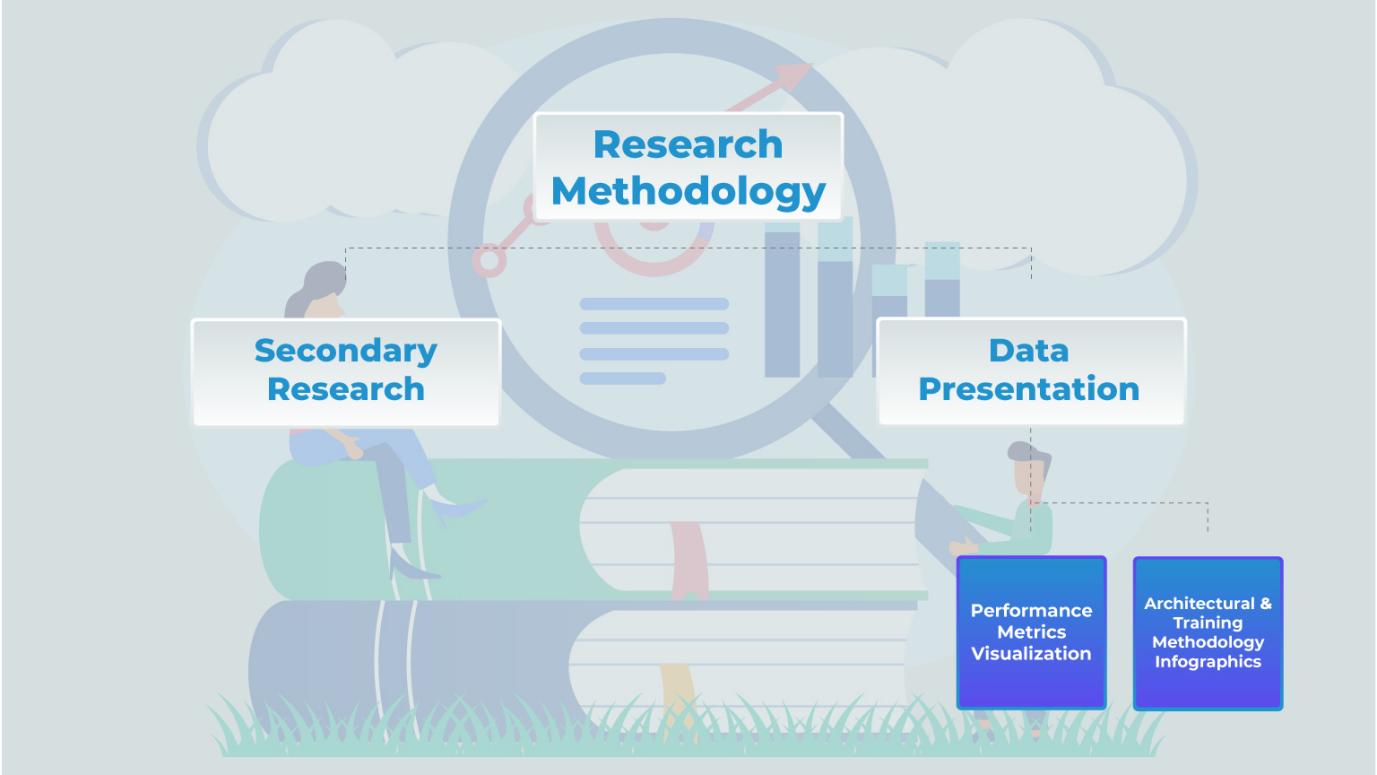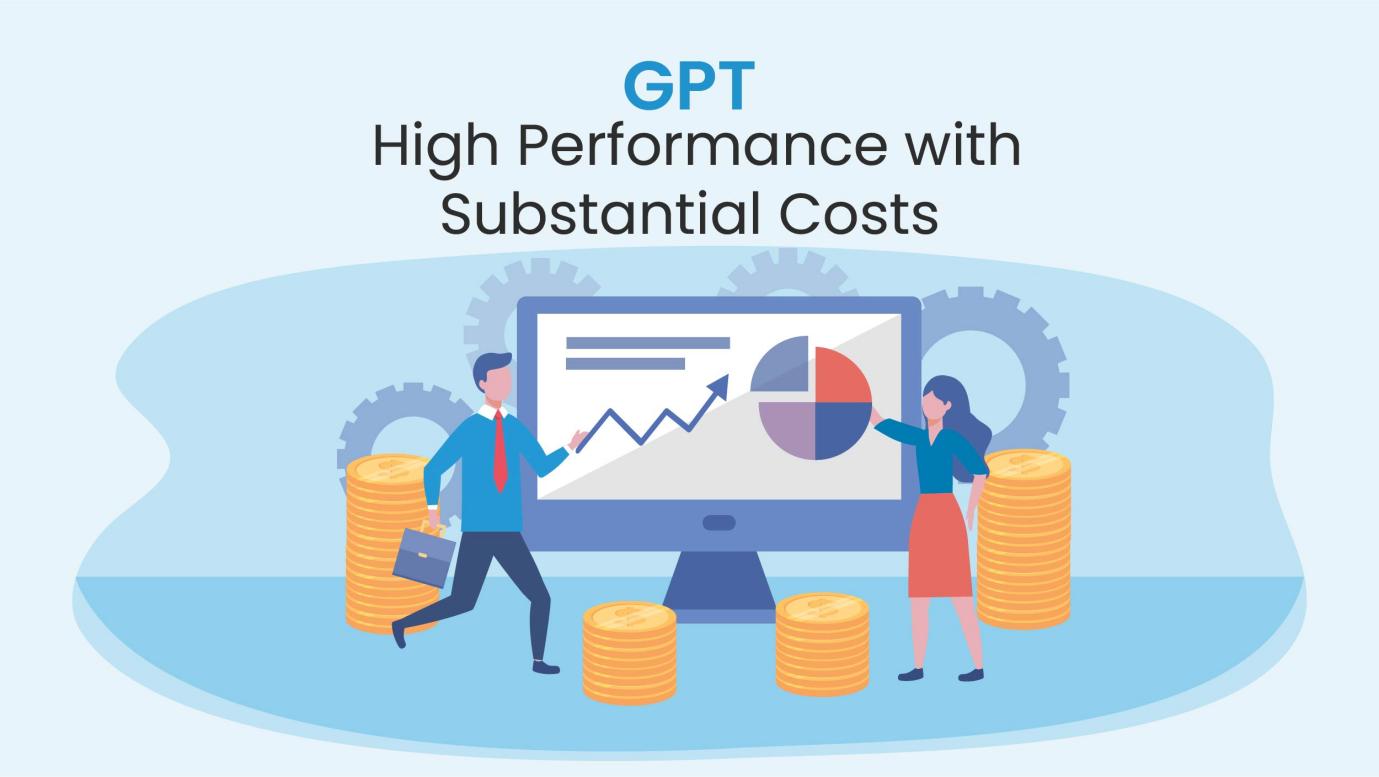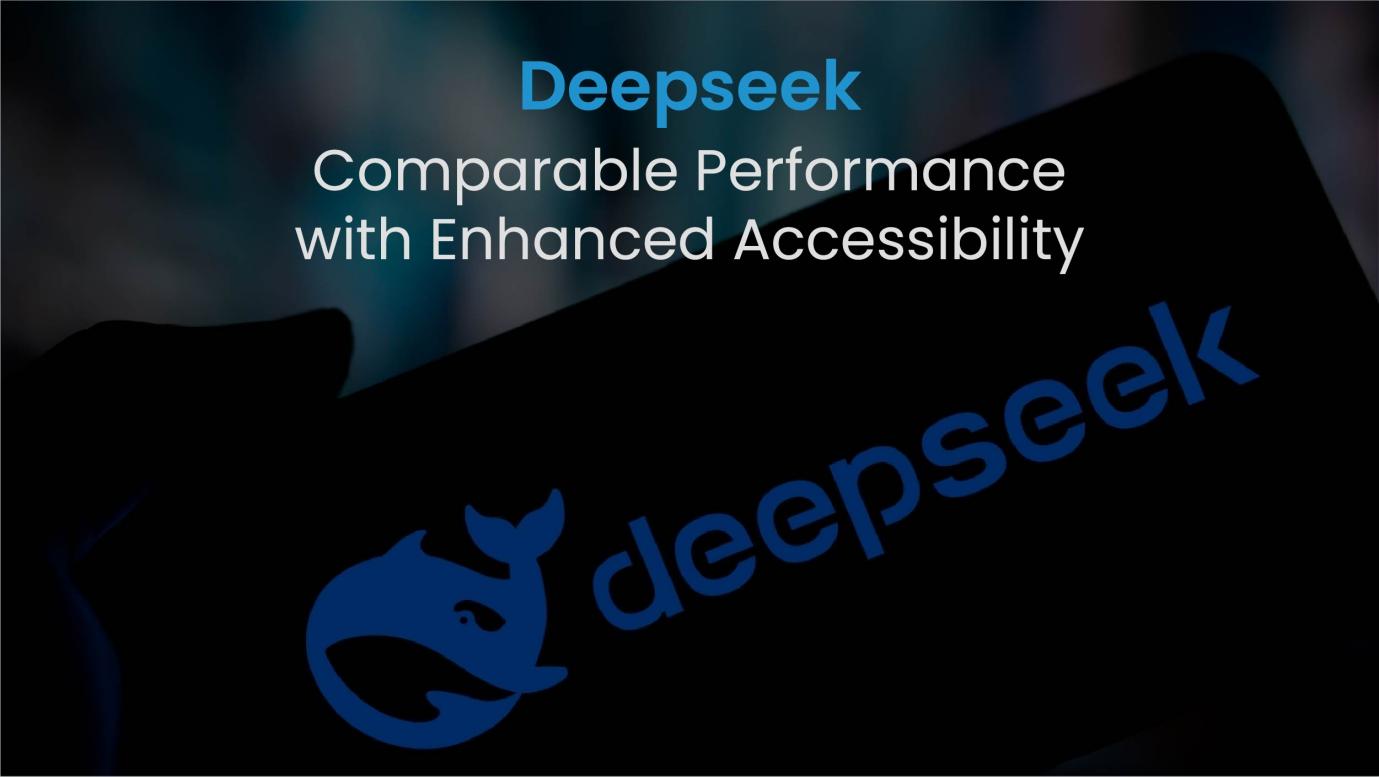GPT vs. DeepSeek: A Comparative Analysis of Leading AI Models

Generative pre-trained transformers as well as DeepSeek are outstanding recent results on artificial intelligence-unique architectures that have different ways of performance evaluation and applications.
Architecture
OpenAI-built GPT models are based on the transformer architecture. These models are decoder-only based, with the sole aim of autoregressive language modeling. They have been pre-trained on huge text datasets that allow them to create coherent and contextually relevant text; they undergo training through unsupervised learning since they have to predict what a complete sentence’s next word should look like so that deep patterns in language can be understood.
DeepSeek is a Chinese AI startup that applies Mixture-of-Experts (MoE) architecture. This architecture only activates a subset of the model’s parameters during inference, thus making it more computationally efficient. DeepSeek’s models also have novel techniques like Multi-head Latent Attention and DeepSeekMoE which compress the Key-Value cache into latent vectors and enable sparse computation, respectively. These strategies help train and infer even with large-scale models.
Performance
GPT models have performed excellently in numerous natural language processing tasks, including text generation, translation, and summarization. However, the training and deployment of such models are very resource-intensive, involving large computational powers and significant investment. For example, training a large GPT model costs $100 million and requires tens of thousands of special chips.
In contrast, DeepSeek has achieved comparable performance levels at a fraction of the cost. By leveraging the MoE architecture and efficient training methodologies, DeepSeek trained its models for under $6 million using approximately 2,000 less powerful chips. This approach not only reduces financial and computational burdens but also democratizes access to advanced AI capabilities.
Applicability
These GPT models have been applied across many industries, content creation, customer service, and even code generation, and that is due to their capabilities of generating human-like text, which makes them suitable for applying tasks like language understanding and generation.
DeepSeek models, though flexible as well, are especially noteworthy for being cost-effective and time efficient. Such properties would allow smaller companies and organizations to access the system with resources limited to afford vast AI infrastructure. Also, an open-source approach encourages collaboration among AI experts and innovation in the AI domain, potentially accelerating most progress in AI.
Both GPT and DeepSeek have significantly contributed to the advancement of AI technologies. GPT’s robust performance across various applications underscores its versatility, while DeepSeek’s efficient and cost-effective methodologies highlight the potential for more accessible AI development. Understanding the distinctions in their architectures, performance, and applicability is crucial for stakeholders aiming to leverage these technologies effectively in today’s AI landscape.
Research Methodology

The comparative study of GPT and DeepSeek would be conducted using a mixed research method of secondary research and proper data presentation methods.
Secondary Research
The study commenced with an extensive review of existing literature, technical reports, and benchmark studies pertinent to GPT and DeepSeek. This approach facilitated a thorough understanding of each model’s architecture, performance metrics, and applicability within the AI landscape. Key sources included peer-reviewed journals, white papers, and reputable online platforms specializing in artificial intelligence research. The secondary research aimed to collate diverse perspectives and findings to ensure a balanced and comprehensive analysis.
Data Presentation
To elucidate the comparative aspects of GPT and DeepSeek, various data visualization tools were utilized:
- Performance Metrics Visualization: Bar charts and graphs were used to represent the various performance metrics including accuracy rates of different tasks and computational efficiency. For example, bar graphs were used to indicate the accuracy percentages of each model in different tasks such as mathematical reasoning and coding. According to the discussion on a controversial thread on Reddit, DeepSeek showed 90% correctness in mathematics while GPT-4o portrayed 83% accuracy. reddit.com
- Architectural and Training Methodology Infographics:Infographics were designed in the paper to represent the architectural differences and training methodologies of GPT and DeepSeek. It was highlighted, for example, that MoE architecture is used by DeepSeek during inference but only activates a subset of parameters, thus being more computationally efficient than GPT models, which use a decoder-only Transformer architecture solely relying on autoregressive language modeling. medium.com
Findings and Analysis
Combining secondary research and the strategic depiction of data, a nuanced comparison of GPT and DeepSeek is able to be carried out, painting valuable insights into their respective architectures, performance capabilities, and applicability in varied AI contexts.
Analysis into the architectures of the GPT and DeepSeek models reveal significantly varying lines of development and design philosophies which have gone on to shape their capabilities and applications within the AI landscape.
GPT Series
The Generative Pre-trained Transformer, developed by OpenAI, has undergone a significant evolution since its inception. The progression from GPT-1 to GPT-4 has been marked by substantial enhancements in language understanding and generation.
With each iteration, the model size and training data have increased, leading to improved performance across various natural language processing tasks. For example, GPT-3 with 175 billion parameters showed its superiority in all these tasks, including translation, question-answering, and creative writing.
GPT-4 pushed these capabilities even further, showing more reasoning and comprehension capabilities. These models apply a transformer architecture using self-attention mechanisms that allow them to process and generate text that closely resembles human writing.
DeepSeek Models
DeepSeek is a Chinese AI start-up that came out with an interesting candidate for AI with the new model DeepSeek-R1.
This model comprises 671 billion parameters, positioning it among the largest AI models developed to date. Despite its scale, DeepSeek-R1 offers advanced AI capabilities at a fraction of the cost compared to industry giants like OpenAI. This cost-effectiveness is achieved through innovative training methodologies and efficient resource utilization. DeepSeek’s approach challenges the prevailing notion that cutting-edge AI development necessitates massive financial and computational resources.
The company has released parts of its model to the public for collaborative innovation and disruption of the AI landscape.
Comparative Analysis
GPT series and DeepSeek models are two different ways of making an AI model. OpenAI’s GPT models have gone large in steps, thereby dramatically increasing the performance in virtually all language tasks.
Since then, it has exponentially increased the burden on computation and resources. In contrast, DeepSeek’s R1 model emphasizes efficiency and accessibility, delivering comparable performance with reduced financial and computational demands.
This democratization of AI technology has significant implications for the broader adoption and development of AI applications.
The architectural evolution of GPT and DeepSeek models underscores the diversity of strategies in advancing AI capabilities. While GPT’s development reflects a trajectory of scaling and complexity, DeepSeek’s approach highlights the potential for efficient and cost-effective AI solutions.
Understanding these differing methodologies provides valuable insights into the future direction of AI research and development.
In the rapidly evolving field of artificial intelligence, performance benchmarks and adaptability are critical metrics for evaluating models like GPT and DeepSeek. This analysis delves into their comparative performance in mathematics and coding tasks, as well as their adaptability across various domains.
Performance Benchmarks
Mathematics:
DeepSeek has demonstrated superior performance in mathematical reasoning tasks. According to a report by The Scottish Sun, DeepSeek achieved a 90% accuracy rate in advanced mathematical benchmarks, surpassing GPT-4o’s 83% accuracy.
This indicates DeepSeek’s enhanced capability in handling complex mathematical problems.
Coding:
DeepSeek is even excelling in coding-related work. A paper on arXiv.org states that DeepSeek-Coder-V2, the second version of the DeepSeek model, was “more robust than GPT-4, Claude 3 Opus, and Gemini 1.5 Pro on popular coding and math benchmarks.”
DeepSeek seems to be a quite good architecture for programming-like applications.
Versatility and Domain-Specificity:
Adaptability and Domain Specificity
GPT:
The GPT series, developed by OpenAI, is renowned for its versatility across a wide range of domains. GPT models excel in general language understanding and generation tasks, making them suitable for applications such as content creation, customer service, and language translation. Their broad training data enables them to perform well in diverse contexts, although they may require fine-tuning for specialized tasks.
DeepSeek:
DeepSeek is designed to be more adaptable for niche domains, which makes it a better choice for special applications. According to the article on Medium, DeepSeek’s architecture tends to allow fine-tuning in specific fields, enhancing its performance in specific tasks.
This adaptability is of great value to industries requiring domain-specific expertise, such as legal analysis, medical diagnostics, or financial modeling.
GPT and DeepSeek have different strengths. DeepSeek outperforms in mathematical reasoning and coding tasks, making it a strong candidate for applications demanding high accuracy in these fields.
Its design also allows for greater adaptability to specialized domains, providing an edge in niche applications. Conversely, GPT’s versatility across various domains makes it a robust choice for general language understanding and generation tasks. This decision between GPT and DeepSeek must be based on the particular needs that will be filled through applying the models.
Cost and Accessibility:
The level of complexity in tasks, the domain, and requirement for adaptability may differ across applications. The cost of implementation of advanced AI models and their availability is critical to organizations deploying such models. It follows that GPT series from Open AI and models from DeepSeek are on contrasting extremes.
GPT: High Performance with Substantial Costs

OpenAI’s GPT models are best known for high performance in natural language processing tasks. This comes with significant computational resource requirements and associated costs, as is demonstrated through the example of GPT-3, which comprises 175 billion parameters, and estimated to cost to train between $500,000 and $4.6 million, depending on hardware and operational efficiencies.
GPT-4, being more advanced, likely incurred even higher costs, with some estimates suggesting around $20 million for training.
These substantial investments in computational resources and energy consumption can be prohibitive for many organizations, limiting accessibility to such advanced AI capabilities.
DeepSeek: Comparable Performance with Enhanced Accessibility

In contrast, DeepSeek, a Chinese AI startup, has developed models that offer performance comparable to GPT series but with a focus on cost-effectiveness and accessibility. DeepSeek’s latest model, DeepSeek-R1, was trained at a significantly lower cost—under $6 million—by employing innovative training methodologies and efficient resource utilization.
This approach not only lowers cost barriers but also opens up the possibilities of advanced AI to more organizations with lighter pockets. The DeepSeek models are also built to be more flexible when working in a more specific niche area, thereby making them of more use across different niches.
While GPT models deliver high performance, their substantial computational requirements and associated costs can limit accessibility for many organizations. DeepSeek’s models, however, provide a more cost-effective alternative without compromising on performance, thereby offering a viable solution for organizations seeking advanced AI capabilities within constrained budgets.
Conclusion and Recommendations
This contrast highlights the importance of considering both performance and resource requirements when selecting AI models for deployment.
The leading AI model being developed is DeepSeek-R1 and OpenAI’s GPT series, where models diversify based on the choice of organizations to suit their needs and resources.
Key Insights:
- DeepSeek’s Open-Weight Model:
DeepSeek-R1 challenges the traditional notion that advanced AI development necessitates massive resources. By adopting an “open-weight” approach, DeepSeek provides public access to certain aspects of its model, promoting collaboration and innovation within the AI community. This strategy not only democratizes AI development but also makes advanced AI capabilities more accessible to organizations with limited resources.
vox.com - GPT’s Versatility:
OpenAI’s GPT models are renowned for their broad language understanding and generation capabilities. Trained on extensive datasets, GPT excels in various applications, including content creation, translation, and conversational agents. Its versatility makes it a strong contender for tasks requiring comprehensive language proficiency.
kdnuggets.com
Recommendations:
- For Cost-Effective, Specialized Applications:
Organizations looking for accessible AI solutions specific to particular domains are in luck with DeepSeek. Its open-weight model possesses high capabilities but not the intense computational resources that typically go hand-in-hand with large-scale AI models. This characteristic makes it particularly useful in special application domains where domain knowledge would be essential.
vox.com - For Broad Language Applications:
For applications demanding extensive language understanding and generation, GPT models remain a reliable choice. Their comprehensive training enables them to perform effectively across a wide range of tasks, making them suitable for scenarios where versatility is essential. where versatility is essential.
kdnuggets.com
This choice of DeepSeek and GPT models will depend on specific application requirements, the availability of resources, and the nature of an intended application. DeepSeek tends to be a cost-effective alternative, specially for niche-oriented tasks, whereas GPT is robust for applications dealing with general language applications.
As we conclude our exploration of GPT and DeepSeek models, we invite you to share your experiences and insights. Have you utilized GPT or DeepSeek in your projects? Which model did you find more effective for your specific applications, and why? Your contributions can provide valuable perspectives for others navigating the AI landscape.
Fx31 Labs is able to deliver innovative high-quality AI solutions that drive the business growth and maintain the competitive advantage in the market with the proficiency of their multi-programming languages and advanced technologies.
